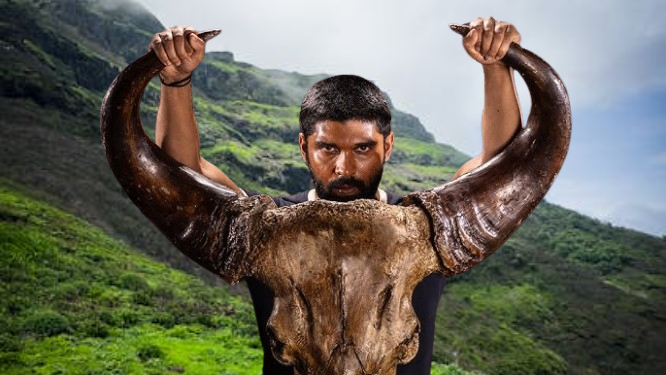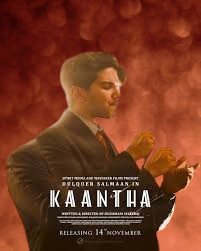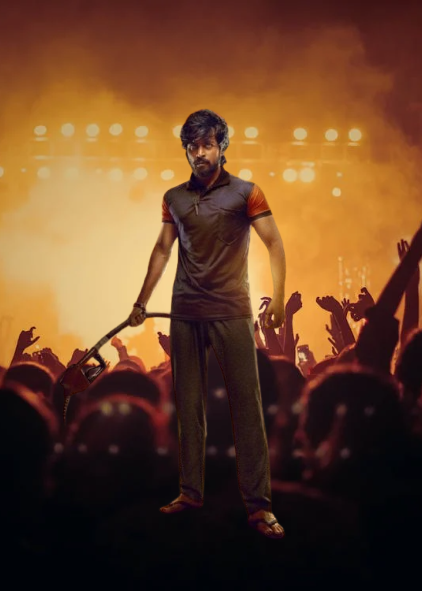Bison Kaalamaadan Movie 2025 Movierulz Review Details

Bison Kaalamaadan (2025) Review: Soundtrack & Production Deep-Dive
Quick verdict
As an 18-year veteran who’s followed production design and film scoring across Indian cinema, I found Bison Kaalamaadan a film of strong intentions and uneven execution.
Rating (Production & Soundtrack):
| Category | Score (out of 5) |
|---|---|
| Production Design | 3.5 |
| Soundtrack & Score | 3.0 |
| Overall Production | 3.2 |
Ratings subjective—open to your thoughts.
Why focus on production & soundtrack?
Films like Bison Kaalamaadan rely on the world they build — the rural 1990s Tamil landscape, Kabaddi arenas, caste-tinged domestic spaces — and the music that narrates feeling.
Insight: Production anchors the film’s social realism even when the screenplay drifts.
Takeaway: Strong visual texture helps the film keep its moral weight.
Production Design: rural canvas and tactile detail
Mari Selvaraj and his production team commit to a tactile, lived-in 1990s Tamil Nadu. The sets — dusty lanes, community courtyards, cramped huts — are textured rather than theatrical.
The Kabaddi grounds feel authentic, with mud, sweat, and crowd choreography that lends credibility to the sports sequences.
| Production Role | Highlight |
|---|---|
| Production Designer | Rural authenticity, era props |
| Art Direction | Layered caste-specific visual cues |
| Costume | Subtle distinctions of class & labor |
The film’s design choices intentionally show caste through spatial dynamics — who sits where, whose wall is decorated — instead of explicit labels. That restraint works for the mood.
However, some interior scenes blur into sameness due to lighting choices that favor grit over contrast; a sharper palette would have separated emotional beats more clearly.
Insight: Production design succeeds at atmosphere; it sometimes undercuts emotional clarity.
Takeaway: The film’s look is memorable but could benefit from bolder lighting to punctuate key moments.
Cinematography & Editing interplay with design
Ezhil Arasu K captures rural frames with close, tactile shots and wide, almost documentary compositions during Kabaddi plays.
The camerawork highlights bodies — bruised, strained, triumphant — which is apt for a sports drama anchored in the body.
| Cinematography Element | Effect |
|---|---|
| Handheld close-ups | Intimacy; raw emotion |
| Slow reveal wide shots | Community scale, caste geography |
| Editing rhythm | Pacing issues in several mid-act scenes |
The editing by Sakthi Thiru sometimes fails to trim redundancy; a coarser cut would have tightened the production’s momentum.
Insight: Camera work is strong; editing choices dilute some production strengths.
Takeaway: More ruthless editing would’ve amplified the design’s impact.
Soundtrack: composition, song placement and political texture
Nivas K. Prasanna’s score oscillates between haunting traditional motifs and contemporary beats. Rap and spoken-word elements from Arivu and Vedan add an explicitly political texture.
What works: the score amplifies tension in caste confrontations and elevates quieter father-son moments.
What doesn’t: inconsistent placement — sometimes a lyrical track interrupts a tense sequence, breaking immersion.
- Strength: Political rap interludes that contextualize anger and aspiration.
- Weakness: Tone mismatch in a few emotional moments where the music pulls attention away from character beats.
Insight: The soundtrack is daring in its blend of folk and politically charged rap.
Takeaway: Better mixing and placement would make the score more seamless.
Song & score breakdown (select highlights)
The songs use folk instruments and vocals that root the story in locality. The background score leans on percussive rhythms during Kabaddi scenes to heighten physicality.
However, there are times when volume balancing issues and abrupt transitions make songs feel editorially stuck-on rather than organically woven.
Sound design & mixing
Diegetic sound — crowd roars, mud-thwacks, shouts — are strong and place you in the arena. The production often nails ambient texture.
Yet the final mix occasionally buries dialogue under score or amplifies music inappropriately for emotional scenes.
Insight: Excellent ambient soundscapes; inconsistent dialogue-to-music balance.
Takeaway: A tighter final mix would improve emotional clarity without losing atmosphere.
Performance integration with production
Dhruv Vikram’s physicality benefits from the production’s gritty staging; his body becomes central to both sport and social story.
Pasupathy’s restrained domestic settings — dim kitchens, narrow courtyards — add emotional weight to his scenes.
How production supports actors
- Costume and makeup amplify social markers without heavy-handedness.
- Location choices force characters into claustrophobic frames that underline oppression.
Insight: Production choices often elevate performances, especially in close exchanges.
Takeaway: Where production falters, performances still manage to keep scenes anchored.
Comparative assessment & awards potential
Compared with Mari Selvaraj’s earlier films, the production leans more into sports-realism than previous overt political symbolism.
Technically, cinematography and design are likely to get attention at regional awards; sound mixing and score may need nomination-level polish to advance further.
| Area | Awards Potential |
|---|---|
| Production Design | Strong |
| Cinematography | Good |
| Soundtrack & Mixing | Moderate (needs tighter mix) |
As someone who’s covered hundreds of production kits and scoring sessions, I feel Bison Kaalamaadan deserves credit for ambition but needs technical finishing to fully realize its potential.
Audience reception & platform notes
| Platform / Outlet | Reception Note |
|---|---|
| Local theatrical audiences | Appreciate grit; some find it heavy |
| Telugu dubbed version | Poor localization affected immersion |
| Online critics | Mixed — praise for intent, critique for pacing |
Note: Reviews on sites like iBomma Movies, Bappamtv Movies, and Iradha Movies reflect varied takes — some uplift the production, others call out tonal inconsistencies.
Final thoughts
Production-wise, Bison Kaalamaadan is a textured, brave film that sometimes trips on finish-line details: editing, mix, and score placement.
For viewers who care about world-building and socio-political production choices, it’s compelling. For those seeking a lean sports drama, it may feel meandering.
Final Production & Soundtrack Rating: 3.2 / 5
Disclaimer: Ratings are my take and may shift with rewatch—your mileage varies.
Question 1
How does the music support the film’s political themes?
Answer 1
The score uses folk motifs and political rap to amplify caste tensions; it contextualizes anger but sometimes distracts due to placement choices.
Question 2
Is the production design realistic for 1990s rural Tamil Nadu?
Answer 2
Yes — the sets and costumes feel authentic and lived-in, successfully grounding the film’s social world.
Question 3
Would technical fixes change my rating?
Answer 3
Absolutely — tighter editing and a cleaner sound mix would likely raise the production score by at least half a point.








